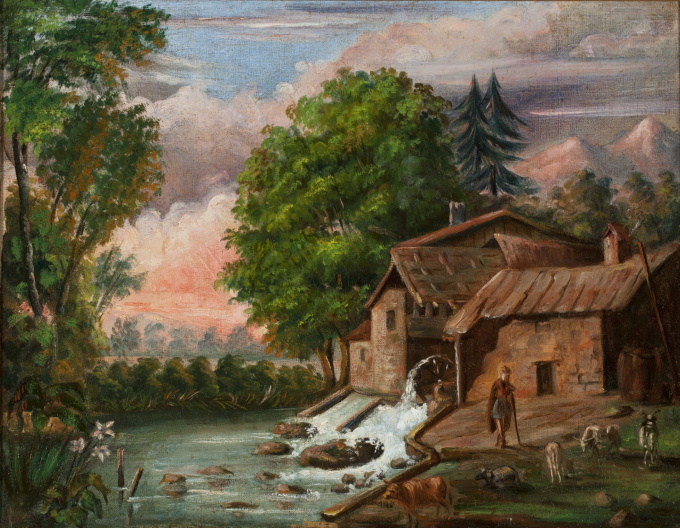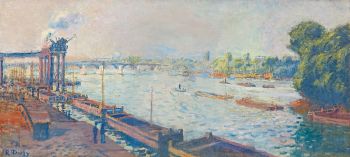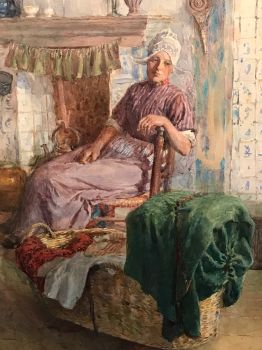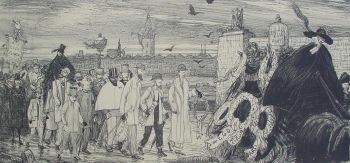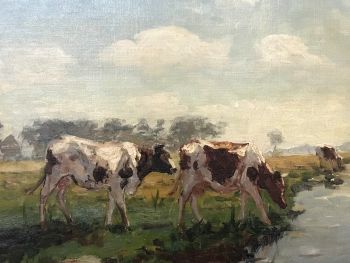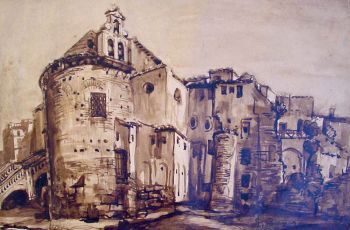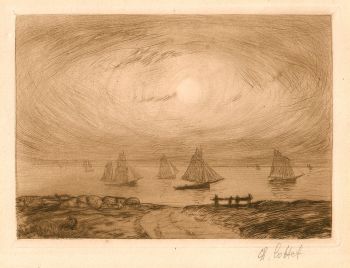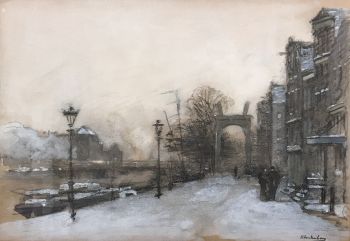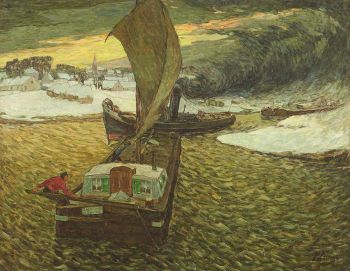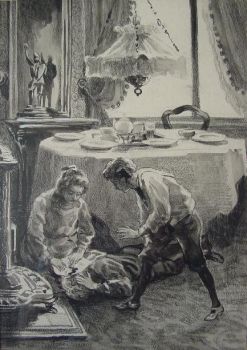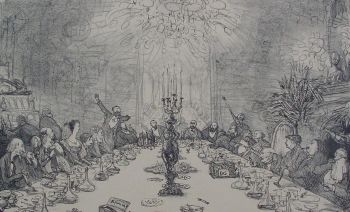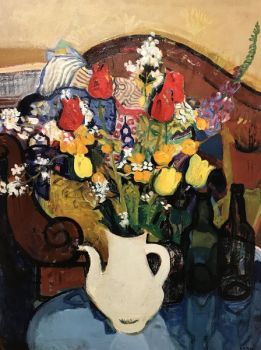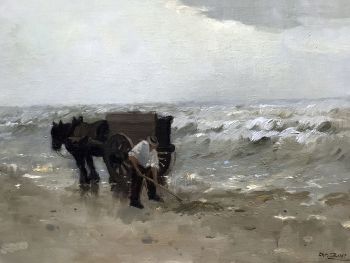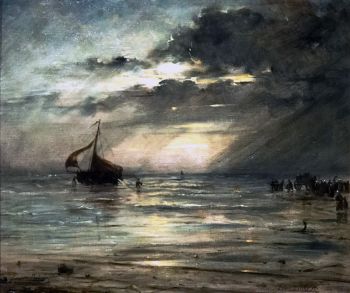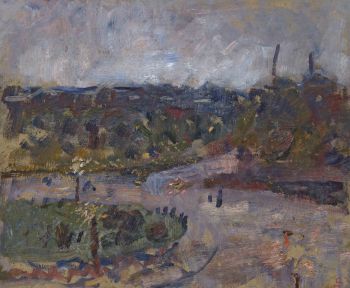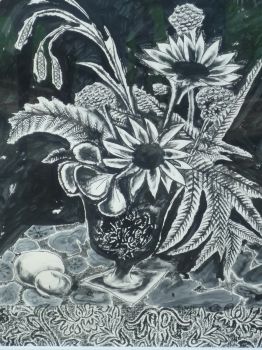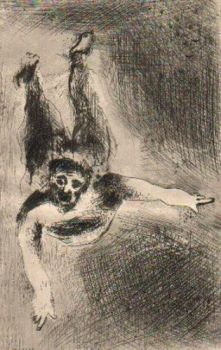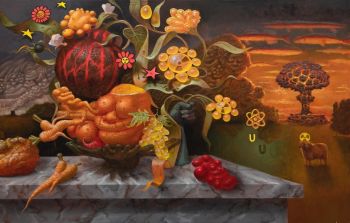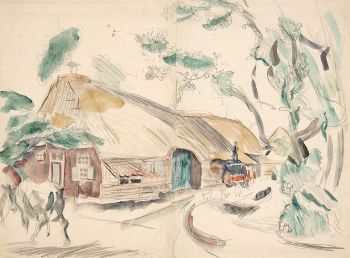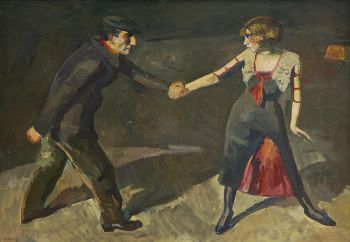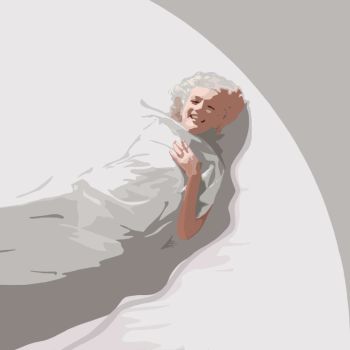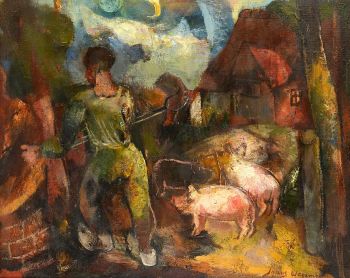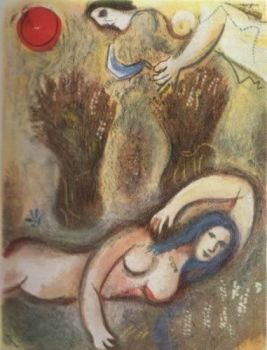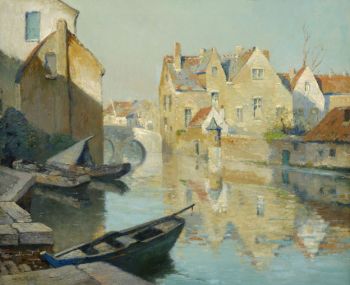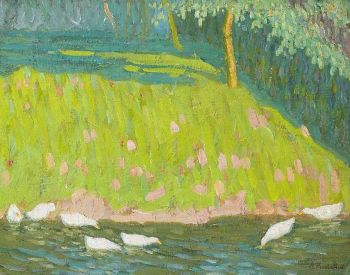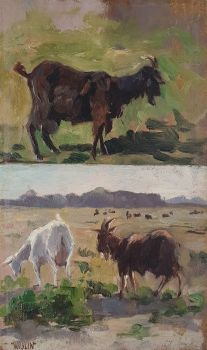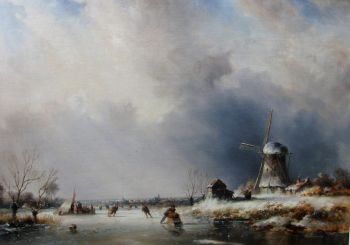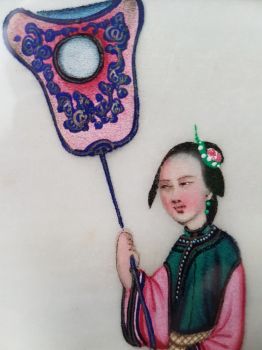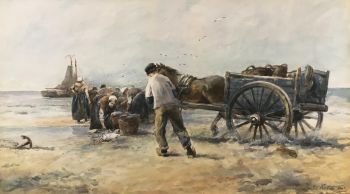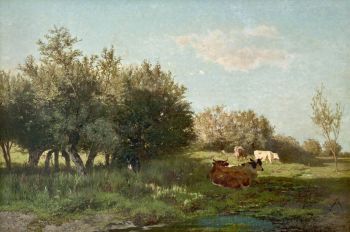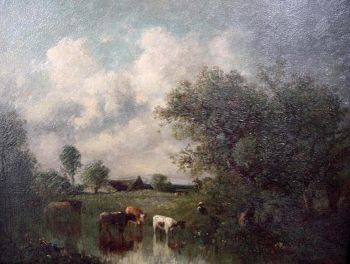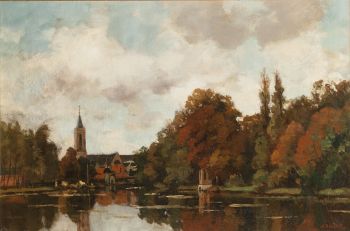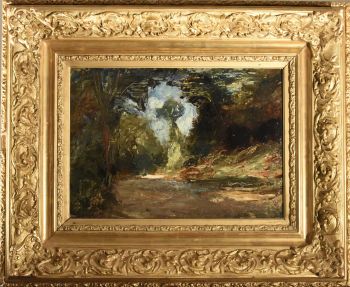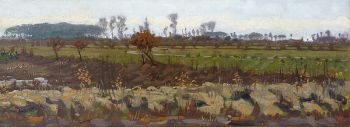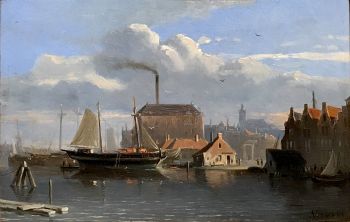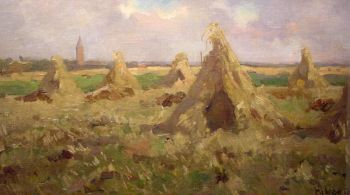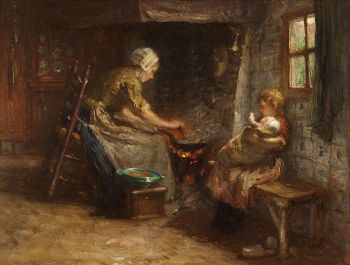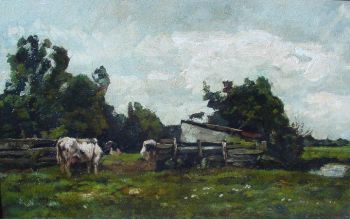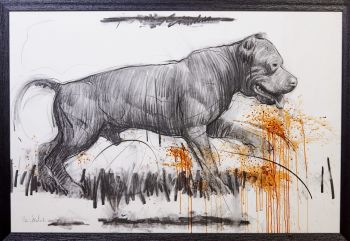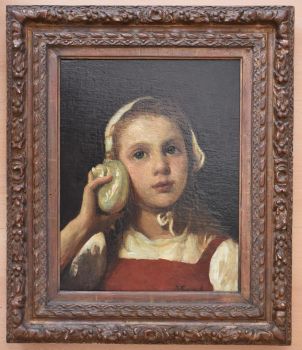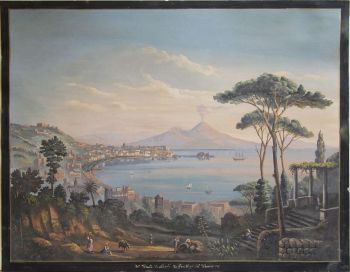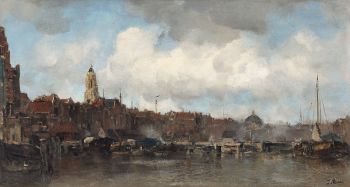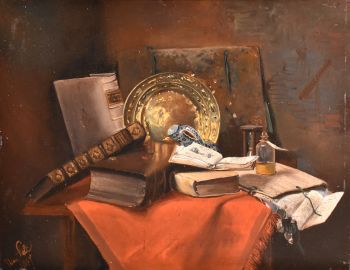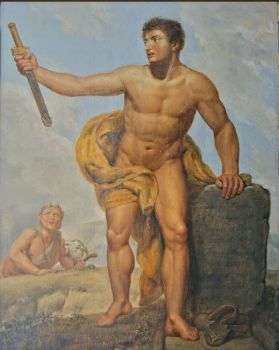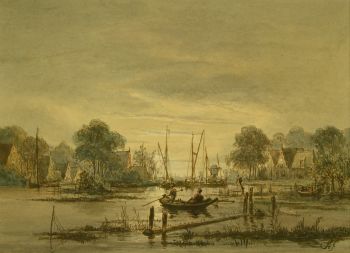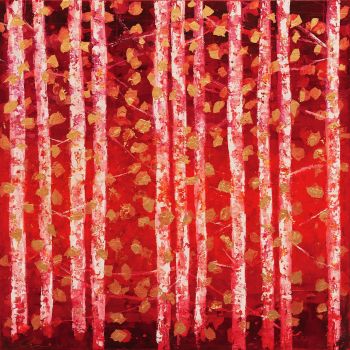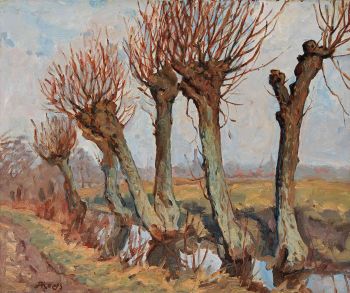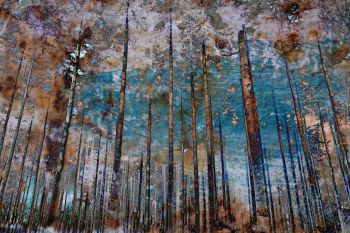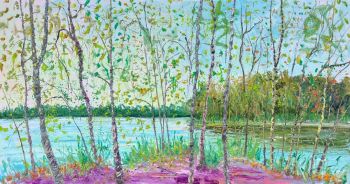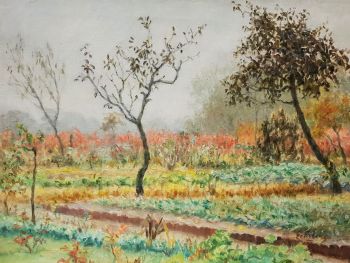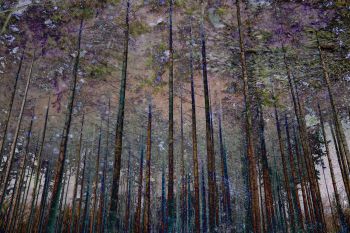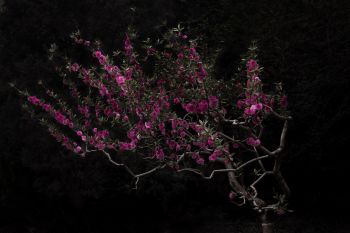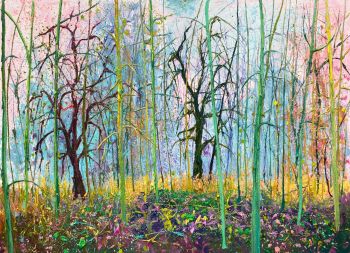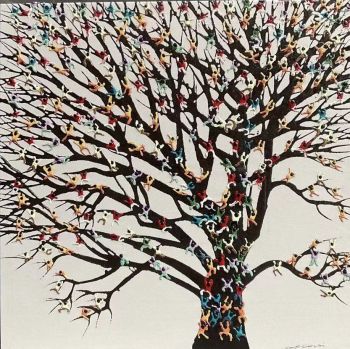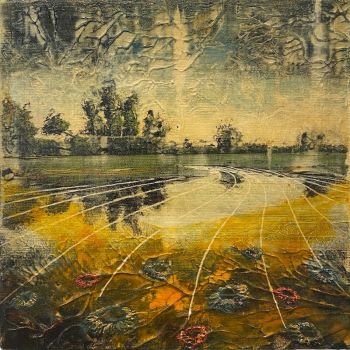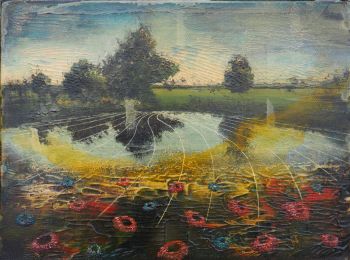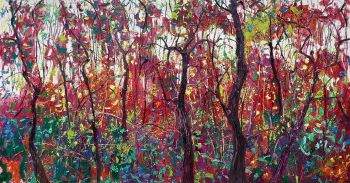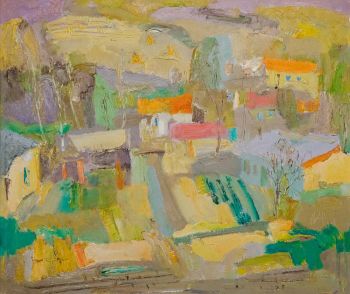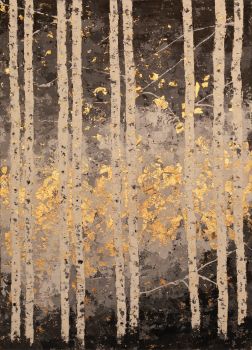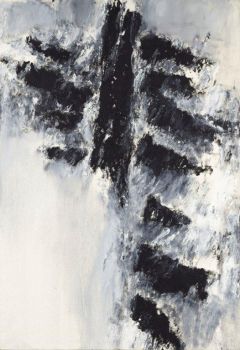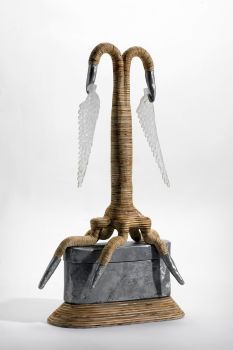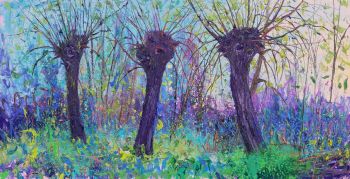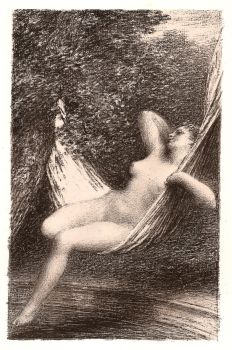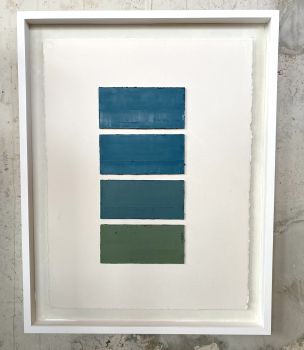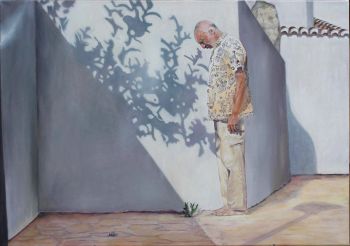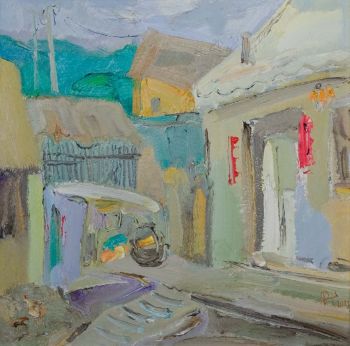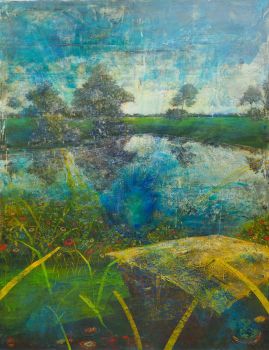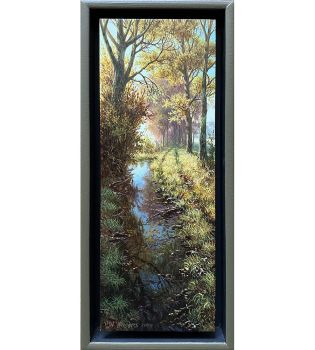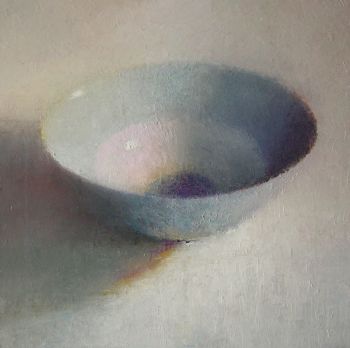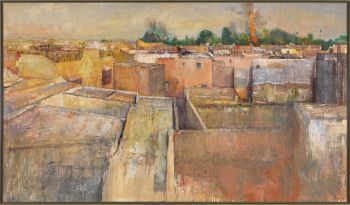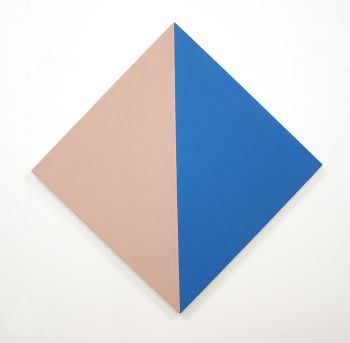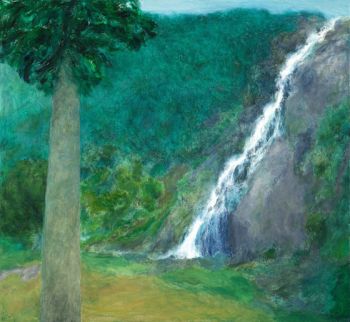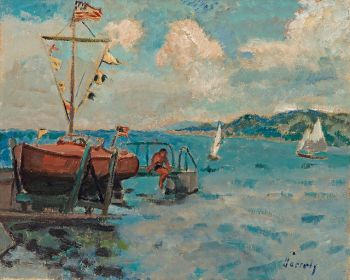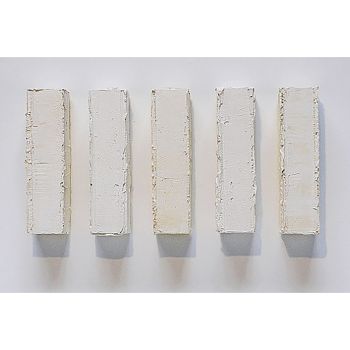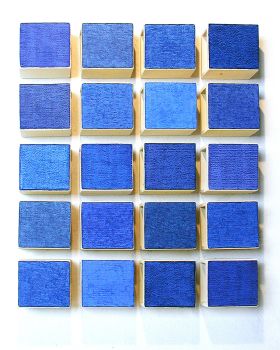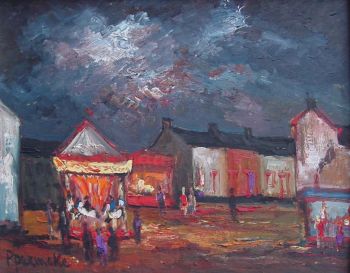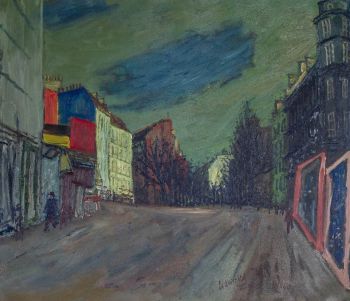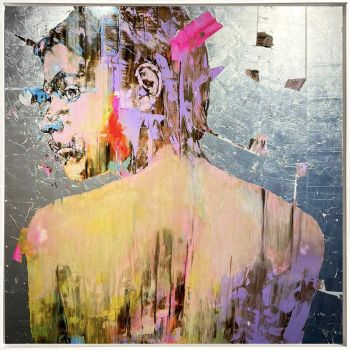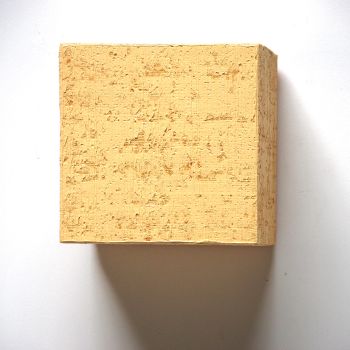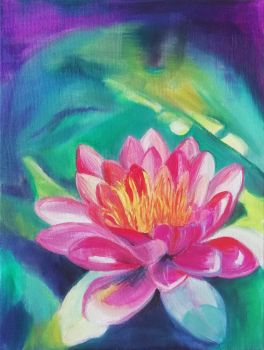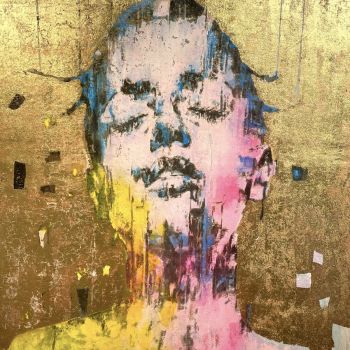Paysage avec moulin 1860
Paul Cézanne
ToilePeinture à l'huilePeindre
28 ⨯ 35.50 cm
Actuellement indisponible via Gallerease
- Sur l'oeuvre d'art1860 (possibly earlier) | Oil on canvas | 28 x 35.5 cm
“I point the way. Others will come after.”
-Paul Cézanne
‘Paysage avec Moulin’ by Paul Cézanne, now presented at TEFAF, shows a watermill in a wooded landscape with a shepherd and some sheep in the foreground, a subject reminiscent of Dutch Masters like Ruisdael and Hobbema. The work has probably been painted in Aix- en- Provence, where Paul Cézanne spent his youth and took his first drawing lessons. However, the mountains in the background are too high to be those from the Aix region and might establish a link to the village of Saint Saveur in the Hautes Alpes, where the Cézanne family originated from and where the young Paul may have spent some time during his vacations.
This painting might be the first oil painting made by Paul Cézanne and represent the first steps to be made by an artist who in the end achieved singular greatness and inestimable influence. The painting by its color and directness of execution appeals to a sensitivity shaped by Impressionism, and seems to represent the way forward for the genius to be.
Paul Cézanne is widely recognized as one of the founding fathers of modern art. As a painter he broke away from the impressionistic aesthetic in which painting was primarily considered as an immediate representation of visual perception. Instead Cézanne used the canvas to register his visual sensations analytically, applying series of discrete, methodical brushstrokes to construct a painting, creating almost architectural compositions with strong sculptural qualities. Cézanne often returned to his subject and each time he examined it from new angles, recombining the physical properties he observed, in paint, not trying to copy nature, but establishing “a harmony parallel to it”. In this way Cézanne was an inspiration to Braque and Picasso, who considered him the mentor of Cubism, and later on in this way Cézanne inspired abstraction.
Pablo Picasso called Paul Cézanne “the father of us all.”
After a life filled with reflection on the nature of perception, Cézanne stated: “We must not paint what we think we see, but what we see. Sometimes it may go against the grain, but this is what our craft demands." Clearly the insight of an experienced painter, who, through artistic struggle, had learned that nature is more complex than we experience at first sight and needs an extra mental effort to be painted truthfully. In the early beginnings of his career though, Paul Cézanne started off in a traditional manner, emulating the masters.
‘Paysage avec moulin’ has an outstanding provenance, which goes back to Paul Cézanne fils, that suggests the work has been cherished by the family of the great painter as one of his earliest works, perhaps his first oil painting. From Paul Cézanne fils ‘Paysage avec moulin’, was passed on to the legendary art dealer Ambroise Vollard, who quite possibly had the painting relined and put on a stretcher to have it framed properly. At the back of the canvas a stamp of Vollard can be found. Vollard, who prided himself to be the first one to have fully understood Cézanne’s greatness, kept the painting in his private collection and later left the painting to his brother.
Ambroise Vollard (3 July 1866 – 21 July 1939) was a French art dealer, who is regarded to be one of the most important dealers in French contemporary art at the beginning of the twentieth century. He is credited with providing exposure and emotional support to numerous then-unknown artists, including Paul Cézanne, Aristide Maillol, Renoir, Louis Valtat, Pablo Picasso, André Derain, Georges Rouault, Paul Gauguin and Vincent van Gogh. He was also an avid art collector and publisher.
Vollard established in 1893 his own art gallery at Rue Laffitte, then the center of the Parisian market for contemporary art. There Vollard mounted his first major exhibitions, buying almost the entire output of Cézanne, some 150 canvases to create his first exhibition in 1895. This was followed by exhibitions of the work of Manet, Gauguin and Van Gogh; These were then followed by a second Cézanne exhibition (1898), the first Picasso exhibition (1901) and Matisse exhibition (1904).
Provenance: Paul Cézanne Jr., Paris; Ambroise Vollard, Paris; Lucien Vollard, Paris; Mme Edouard Jonas, Paris; Hôtel Rameau, Versailles, Dec. 11, 1983, no. 138, ill.; Private collection
Literature: Rivière 1923: Le Maître Paul Cézanne, p. 195, Le Barrage. Venturi 1936b: Cézanne: Son Art, Son Oeuvre, 2 vols., no. 28, ill. vol. 2, Paysage romantique. Rewald 1996: The Paintings of Paul Cézanne, A Catalogue Raisonné, 2 vols., no. 17, ill. vol. 2, Paysage avec moulin - Sur l'artistePaul Cézanne (1839 Aix-en-Provence, France - 1906, Aix-en-Provence) était un peintre post-impressionniste français né à Aix-en-Provence. Fils d’un riche banquier, il écrivit de la poésie et eut pour ami Emile Zola, qui le persuada, contre la volonté de son père d’étudier l’art à Paris. A partir de 1863, il rejoint le groupe autour de Manet, et ses premières œuvres, influencées par Delacroix, sont souvent des scènes érotiques ou mythologiques. Il est devenu plus étroitement associé aux impressionnistes et se lie d'amitié avec Pisarro, Monet et Renoir. Il a rapidement développé un style très personnel. Il considérait les objets naturels comme constitués de formes géométriques de base, et son objectif était de les représenter uniquement par couleur, sans ombre ni perspective. Cézanne a réalisé ses effets avec des couleurs limitées: principalement des bleus, des verts et des rouges. Ses sujets étaient: des paysages, des natures mortes, quelques portraits locaux et des baigneurs. Le talent de Cézanne étant peu reconnu, il s’enivra et s’installa en Provence en 1878. Il y vécut en réclusion pour le reste de sa vie. À la mort de son père en 1886, il épousa Hortense Figuet, mannequin avec qui il avait vécu auparavant. Ses dernières œuvres sont plus violentes et lyriques. En 1985, sa première exposition est montée et par la suite Cézanne jouit d'une renommée au moins modérée. Il est mort après une chute. Il fut une source d'inspiration importante pour Matisse, Picasso et Braque. Le mouvement artistique du cubisme s'inspira de ses théories géométriques mais son influence s'étendit plus largement.
Artwork details
Catégorie
Sujet
Style
Matériel & technique
Couleur
Related artworks
Jan Sluijters
Original illustration of Sluijters for the book: 'Laura's opstel'1881 - 1957
Prix sur demandeKunsthandel Pygmalion
Marc Chagall
Booz se reveille et voit Ruth a ses Pieds1952 - 1980
Prix sur demandeArthouse Marc Chagall
1 - 4 / 24Bernardus Johannes Blommers
Het bereiden van de maaltijd1870 - 1914
Prix sur demandeStudio 2000 Art Gallery
1 - 4 / 24- 1 - 4 / 24
- 1 - 4 / 24

